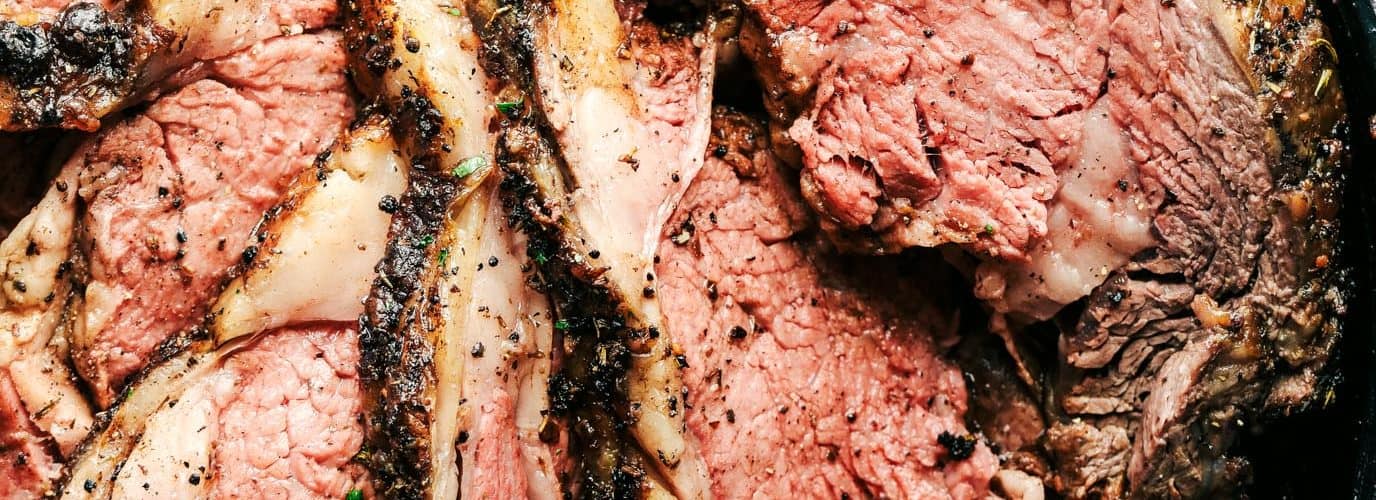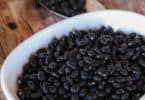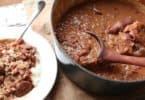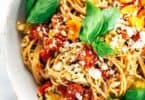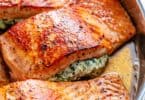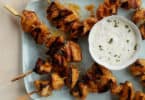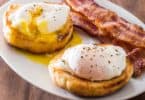Prime rib is one of the classic holiday dishes, and is great for serving a large number of people. A full standing rib roast, (so named because the ribs allow you to cook it in an upright, or “standing” position without a rack) is comprised of seven ribs, and weighs around fifteen pounds. Prime ribs can be as small as two ribs, but try to avoid anything less than three, as that’s less of a roast than it is a steak. On average, one rib feeds two people, so one prime rib roast can feed up to fourteen people.
Step One: Purchasing. Many so-called “prime” ribs are not actually USDA prime grade meat, but choice grade meat instead. If you want prime grade, (which has better flavor, but is more expensive,) ask your butcher, since most stores do not carry it. Unless the meat in question is actually graded as prime, it cannot be labeled as prime rib. Instead it will most likely be labeled beef bone-in rib roast, or something similar. Buying actual prime rib can really make a noticeable difference. If you don’t like fat, make sure to ask for a first cut, (also called the loin end or small end,) which comes from the back of the rib section. The meat from this area is leaner and has smaller bones. You could also buy a boneless roast, but it is not recommended, as the bones give the roast extra flavor. Be sure to check the packaging date.
Step Two: Preparation. Bring your roast to room temperature before cooking. If your roast is frozen, let it thaw completely in the fridge. After thawing, let it sit out between 2 to 4 hours, depending on the size of the roast. Trim any fat thicker than one inch before cooking, but do not remove the ring of fat surrounding the roast. For easier carving, remove the rib section, and then tie it back on with cooking twine. This will allow the roast to stand while making it easier to remove the bones afterwards. If you choose not to remove the ribs beforehand, make sure to still tie up both ends, or else the outer section will peel away and overcook.
Step Three: Cooking. Begin by preheating your oven to 450°. Press paper towels against the roast to remove extra moisture, and sprinkle or rub in your chosen spices. There are a large variety of different styles for cooking roasts, but standard salt and pepper work great. If you wish, you can rub butter on the cut ends of the roast for extra flavor. Or try eliminating salt for moister, juicier meat. Place your roast rib side down in a roasting pan at least three inches deep. It is very important to use a meat thermometer in cooking prime rib, so stick it into the thickest part of the roast, making sure it is not touching fat or bone. Place the roast uncovered in the oven, After fifteen minutes, reduce the heat to 325°, and use the accumulated fat to baste the ends every half hour. Rare meat should take between 13-15 minutes per pound, and between 15-17 minutes for medium rare. 45 minutes before the end of the estimated cooking time, start checking the thermometer. Cook until rib reaches between 115-120° for rare, or 125-130° for medium. Once the rib reaches the correct temperature, remove it from oven and cover with aluminum foil for twenty minutes, during which the roast will finish cooking. Congratulations, you have just cooked a prime rib. Cut the strings, carve, serve, and enjoy.
<>

